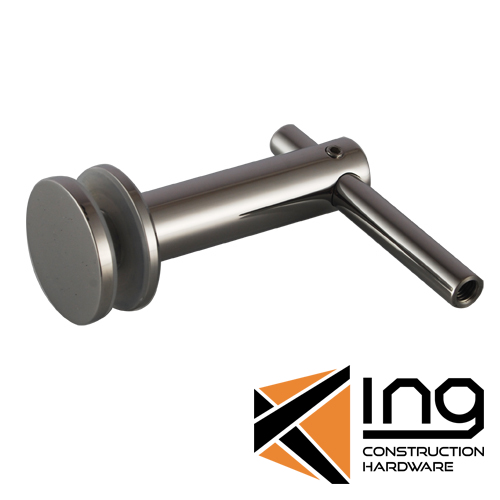Easy Steps to Install a Wall Mounted Handrail Bracket

The most significant aspect of handrail installation is simply mounting the railing to the wall. However, it is not as simple as locating a stud and screwing the brackets into it. Handrail height, weight restrictions, and convenience of bracket installation are all considerations.
Below are the easy steps to install a wall mounted handrail bracket.
Know the maximum recommended weight requirements
Due to the constant upward and downward movement of objects, we must indicate the maximum weight of the handrail bracket handle. According to trusted sources such as IBC and IRC, these handrail brackets must be able to handle a weight of 200 pounds delivered downward within two inches of the top edge of the top rail.
Measure the stud spacing for wall installation
Standard studs are 16" apart in the center, Which means that the distance between the centers of each stud is 16". However, to confirm the location of studs along the wall, use a stud finder. Measuring and labeling the studs before installation of a wall mounted handrail bracket will make the process much smoother.
Properly measure the height of the handrail
The IBC, IRC, and ADA require that handrails be built 34" to 38" above the stairs or walking surface of a ramp, walkway, or corridor. On stairs, this distance is measured from the snout of the tread. Handrails must be uniform in height throughout their length.
To accurately measure the height of the wall mounted handrail bracket it at the starting point or the end point of the stairway and draw a mark between the two places. Also, confirm that the height is maintained by constantly calculating from different spots.
Install brackets on each end
When you are ready to attach brackets to the railing, start by installing one at each end. Once the brackets are installed, measure the remaining stair handrail bracket spacing and mark it on the railing.
Consider how the brackets attach to the railing
Understanding how a wall mounted handrail bracket will attach to the railing is critical when you plan to install your handrail. Wood and stainless steel handrails require brackets to be screwed directly into the rail.
The screws used to secure the bracket to the handrail are typically short, so they do not break the wood or protrude from the top of the handrail. These small screws indicate that the bracket is not as securely secured as it could be, and as the screws loosen over time, the handrail may become unstable.
King Hardware handrails include a continuous channel that allows you to quickly secure the stud by putting brackets where they are required. To provide a more secure connection, swivel the brackets to fit the studs at the desired angle.
Consider how the brackets attach to the wall
The questions below will help you understand how securely the brackets will adhere to the wall.
- What size screw does the bracket allow
- How many screws
- What if there's no stud
- Decoration
- Reinforced drywall
Can they attach to other surfaces? Brick? Cinderblock?
Screws must be tightly fastened to wooden studs, concrete, brickwork, or other structural parts. When fastening to masonry, use concrete screws or the necessary wall anchors.
Here's what you'll require for each surface:
- Wood, Brick, Concrete, or Others
When putting handrails on wood, brick, or concrete, use screws that firmly attach the handrail bracket in place.
- Masonry
When installing a wall mounted handrail bracket in masonry, use replacement masonry screws or wall anchors to ensure structural strength.
Do they allow unimpeded passage for the hand?
The IBC and IRC both require continuous handrails over the length of the stairway or ramp. The ADA standards go even further, stating that handrail grasping surfaces must be continuous along their length and cannot be obstructed along their tops or sides and that the bottoms of handrail gripping surfaces cannot be obstructed for more than 20% of their length. The brackets you select for your handrail should match these specifications.
Research manufacturers guidelines
When in doubt, consult the manufacturer's guidelines to find solutions to particular queries or, if necessary, a unique circumstance.
Conclusion
Placing brackets along the handrail necessitates exact measurements. What if brackets allowed for more flexible positioning? King Hardware twists and lock into position, eliminating the need to screw them directly to the handrail. So, if you mismeasure or need to relocate the wall mounted handrail bracket for whatever reason, simply twist it to unlock, remove the bracket, reposition it in the extruded channel, and lock it back in place.
The bracket itself pivots, allowing you to install the handrail at the ideal angle without worrying about getting the screws exactly correct. This capacity to pivot or reposition ensures you'll always be able to strike a stud. Furthermore, even though King Hardware allows for three screws, they can still withstand 500 pounds of strain if just two screws are attached to the stud.
